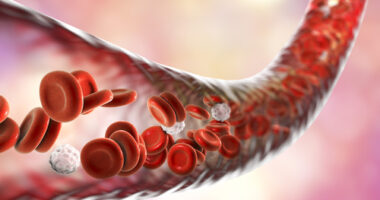PAH Patients May Lack Enough of Some Key Vitamins, Minerals
Study highlighted possible role of fluid intake, sugar, salt in disease

People with pulmonary arterial hypertension (PAH) may lack some key vitamins and minerals their bodies need daily to stay healthy, which may lessen their vitality, according to a small study from the Netherlands.
Besides the known lack of vitamin D and iron, researchers observed lower than recommended levels of vitamin B12, vitamin K1, and selenium in some people with PAH. “There is room for improving dietary intake,” they wrote.
The study, “Nutritional status in pulmonary arterial hypertension,” was published in Pulmonary Circulation.
Many people with PAH lack proper nutrition. This may be due in part to changes in the diet and malabsorption, which is when the body is unable to properly absorb nutrients from the food they eat.
While having too low vitamin D and iron appears common among those with PAH, deficiencies in other vitamins and minerals are not as well described. Eating a healthy diet is key, but evidence-based dietary recommendations are lacking.
Vitamins and minerals are micronutrients, substances the body needs in only small amounts. All have different ways to help keep the body working properly.
To add evidence for nutrition in PAH, the researchers measured the levels of vitamins and minerals in the blood from people with this condition.
Food intake and quality of life were tracked using questionnaires, and exercise capacity was determined based on the distance walked on the six-minute walking distance (6MWD) test.
The study included 37 patients (31 women, six men) with a diagnosis of PAH. Their mean age was 47.9 and their mean body mass index (BMI) was 25.4, which falls within the overweight range based on body fat. They walked a mean 503.2 meters on the 6MWD test.
The role of fluid, sugar, salt intake in PAH
Nearly one-third (31%) of patients drank more than two liters of fluid daily, which exceeded the amount recommended by the American Heart Association (AHA). “The intake of fluid mostly came from tea, coffee and water,” the researchers wrote.
Most (87%) ate too much sugar in a day, it mainly coming from sugary drinks, baked goods, and candy. The more sugar they ate, the more fluid they drank.
Limiting fluid intake can help prevent or reduce swelling (edema) in PAH. Edema is a common symptom that occurs when the heart is under strain and unable to pump blood properly, causing fluid to build up.
“To lower fluid intake an effective reduction of refined sugar intake to a maximum of 37.5 grams per day for male and a maximum of 25 grams per day for female [patients], as stated in AHA guidelines, is advised,” the researchers wrote.
One in four patients consumed more salt (sodium) than the recommended 2,300 milligrams per day. The sodium came mainly from a variety of packaged and processed foods. More than half (56%) ate less than 1,800 milligrams of sodium in a day, however.
Deficiencies in vitamins, minerals
Vitamin D deficiency was found in 43% and nearly one-third (32%) had iron deficiency.
Most had a normal level of vitamin B12, which the body needs to make red blood cells. When the body lacks enough vitamin B12, it will make extra amounts of methylmalonic acid. Based on levels of methylmalonic acid, 29% of patients were suspected to have “functional” vitamin B12 deficiency.
Up to 60% had a vitamin K1 deficiency and 41% had low selenium, a mineral that helps protect the body’s cells from harmful free radicals. Low selenium was linked to low vitality, a measure of quality of life that describes a person’s energy levels and how vigorous and active they are.
“Further research is needed to understand the clinical relevance” of micronutrient deficiencies in people with PAH. However, “there appears to be an unmet need for improvement in nutritional intake,” the researchers concluded.








